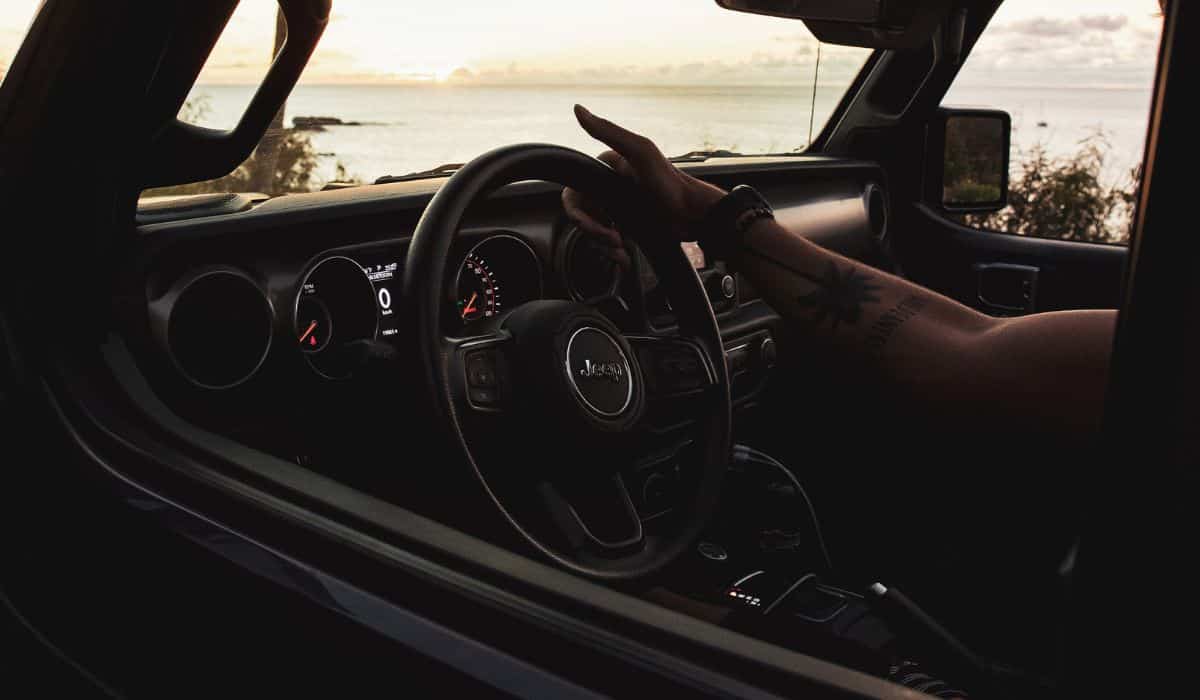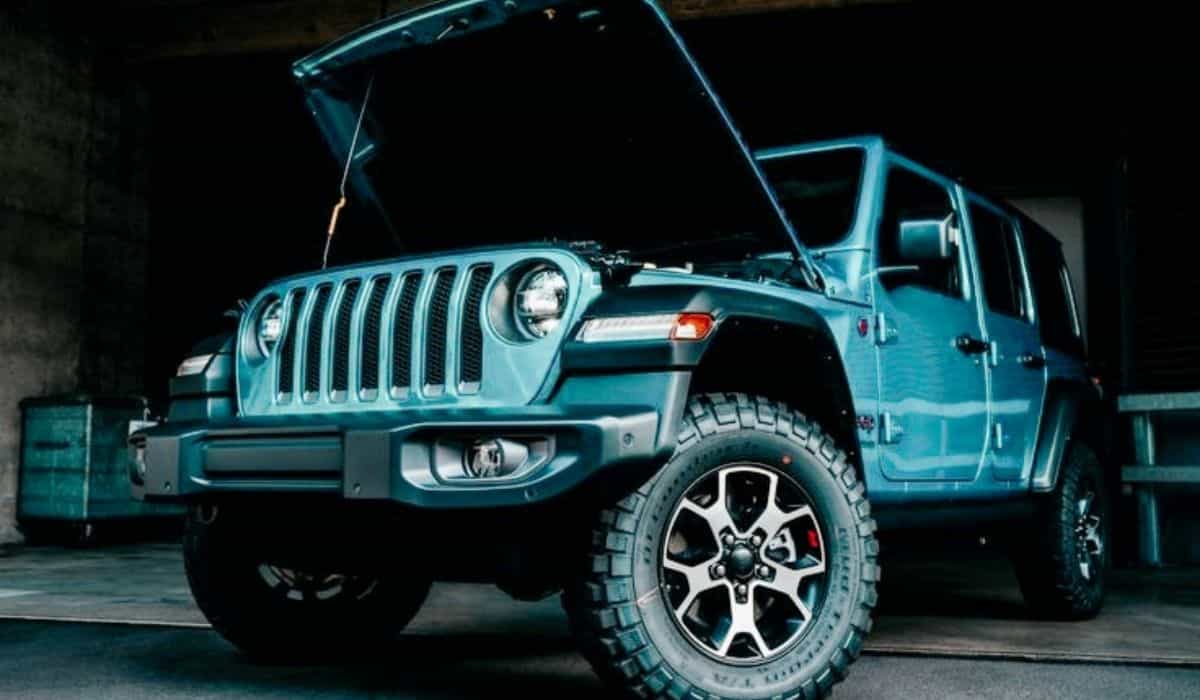Where The Antifreeze Smell In Your Jeep Wrangler Is Coming From (And How To Fix It)
Antifreeze is the bright yellow, red, or green liquid poured into your car’s radiator to keep it at optimum temperature. It also has an unmistakable sweet smell that normally doesn’t linger inside the vehicle. So, if you’re wondering why your Jeep Wrangler smells like antifreeze, here’s the answer.
The antifreeze smell in your jeep wrangler is likely due to coolant leaking from the radiator cap, a loose hose, or a faulty gasket. A quick inspection of the coolant system should tell you if this is the case. If a leak is detected, repair or replace any worn components and top up the coolant.
The antifreeze goes into the closed-loop cooling system in your car engine, which means it shouldn’t be able to escape and create a smell. So, if your Jeep Wrangler smells like antifreeze, it’s definitely a sign of a potential problem. Let’s look at possible causes and find out how to stop the antifreeze smell in your jeep Wrangler.
Why Does My Jeep Wrangler Smell Like Antifreeze?

Pure antifreeze or coolant has a strong, sweet, almost candy-like smell that spreads quickly. If your Jeep Wrangler is giving off such a smell, it’s probably because of a leak in your cooling system.
If it’s coming from the A/C vents, it’s definitely a coolant leak. However, if it smells like burning antifreeze (slightly sweet but also pungent), it could be from overheating rubber or burning plastic.
Let’s look at some of the potential causes of this issue and how to address them.
Coolant Leak
The engine coolant is a mixture of antifreeze, water, and other additives. It’s responsible for transferring heat from the engine to the radiator.
Under normal circumstances, the coolant keeps circulating in a closed loop. However, cracks or worn-out seals can result in leaks that spread around the engine bay and leave a telltale sweet smell. If the leak falls on hot components like the exhaust manifold, it burns and lets off a pungent smell.
Some other causes of coolant leaks in a Jeep Wrangler include a faulty thermostat, worn-out hoses and clamps, loose radiator cap, overfilling, and corroded pump.
To fix this problem, you’ll have to inspect the entire coolant system and replace or repair the faulty part in the tubing. And make sure the caps on the radiator and expansion tank are tight and in good condition.
Smaller leaks often don’t show up in the form of drips, so you may need to touch the tubing around to locate the leak. But make sure the engine has cooled down completely before you do that.
Alternator Issues
The alternator is responsible for supplying electricity to the vehicle. It doesn’t contain antifreeze liquid, but it often has rubber and plastic components that produce a burning smell when overheated — and this smell can be mistaken for an antifreeze smell.
It usually happens when the alternator fails or has excessive wear after continuous usage, resulting in increased friction between the components.
To diagnose the issue, you can inspect the alternator for signs of damage or overheating.
Short Circuit
If the antifreeze smell gets mixed with an electrical burning odor, it’s most likely due to a short circuit. The wires around the heater core, climate control module, or HVAC unit are more prone to this issue. And the smell is most likely from burning vinyl or rubber insulation.
This is a vast and complex issue and can be difficult to diagnose. You’ll need the help of a certified technician to inspect the wiring and look for signs of fraying or melted insulation, indicating a short circuit.
Faulty Brakes
Melting brake pads also produce a burning smell often mistaken for antifreeze. It happens when the brake rotor or caliper gets too hot.
There are several causes for this, including worn-out pads, misaligned calipers, and contaminated brake fluid.
To fix this issue, you’ll have to inspect the brakes and replace any worn-out parts. This is also a good time to check the brake fluid level and condition. If you find it contaminated, make sure to replace it with manufacturer-approved brake fluid.
How Much Does It Cost to Fix an Antifreeze Leak?
The cost of the repair can vary depending on the severity of the leak and the parts that need to be replaced.
For example, a new radiator clamp costs around $15. A hairline crack in the tubing can be fixed with sealant for around $30. However, a new tube can cost up to $100 or more, depending on the make and model of your vehicle.
As the problem becomes more serious and if it involves extensive labor, you can expect the cost to increase significantly.
For example, a new expansion tank costs around $500, a water pump replacement can cost anywhere from $400 to $1,000, and fixing a blown radiator can set you back up to $2,000.
So it’s best to have your Jeep inspected by a certified mechanic and get an exact estimate of the repair cost.
How to Check the Radiator Fluid in a Jeep Wrangler

Checking the radiator fluid is easy and shouldn’t take more than 10 minutes. These regular checks are really helpful for spotting leaks and other problems early, saving you from expensive repair costs.
Here’s a step-by-step guide on how to do it:
Step 1: Park Your Jeep Wrangler on a Level Surface
Make sure your Jeep is parked on a level surface. This will allow you properly assess the fluid levels.
If you’ve been driving for a while, wait for the engine to cool down completely. This can take anywhere from 30 minutes to an hour. The radiator cap must be cool to the touch before you open it.
Step 2: Open the Hood
The Jeep Wrangler doesn’t have any internal cable for the hood; instead, two clips on either side and a lock latch in the center of the hood hold it in place.
To open the hood, flip open these latches, push the central latch and then apply pressure to the hood and it will pop open. Put the hood rod in its holder to keep it in place.
Step 3: Locate the Radiator Overflow Tank
In the Jeep Wrangler, the overflow tank cap is located right in front, on the driver’s side of the engine. It’s a round yellow cap labeled as “Engine Coolant Only.”
If your Jeep doesn’t have a labeled cap, check the owner’s manual or do a quick search online to be sure.
Step 4: Open the Overflow Tank Cap
Be very careful when executing this step. The radiator is a pressurized chamber and may have boiling hot liquid in it. A small mistake can cause a nasty burn.
Be 100% sure that the engine is cooled down completely, and then slowly loosen the cap. If you feel any resistance, stop and wait a few more minutes.
Step 5: Check the Coolant Level
You can get an idea of the coolant level by looking inside the tank. But a better way is to use a dipstick and then adjust the amount of coolant according to the markers indicated on the sides of the tank.
Remember not to fill the container to the brim because the coolant expands when heated.
There are usually two markers:
- The low marker is for the minimum recommended level — the coolant should not exceed it while the engine is cool.
- The full marker is the maximum allowed level when the engine is hot — the coolant should never go above this line, even when the engine is hot.
Step 6: Close the Overflow Tank Cap
Once you’ve adjusted the coolant level, close the overflow can and make sure it’s tightened properly. Not doing so may cause a leak, and you’d have to start all over again.
Step 7: Test the Engine
Close the hood properly and start the engine. Let it run for a few minutes, and monitor all the gauges to ensure everything is working properly. If all the gauges are in the green, you’re good to go.
